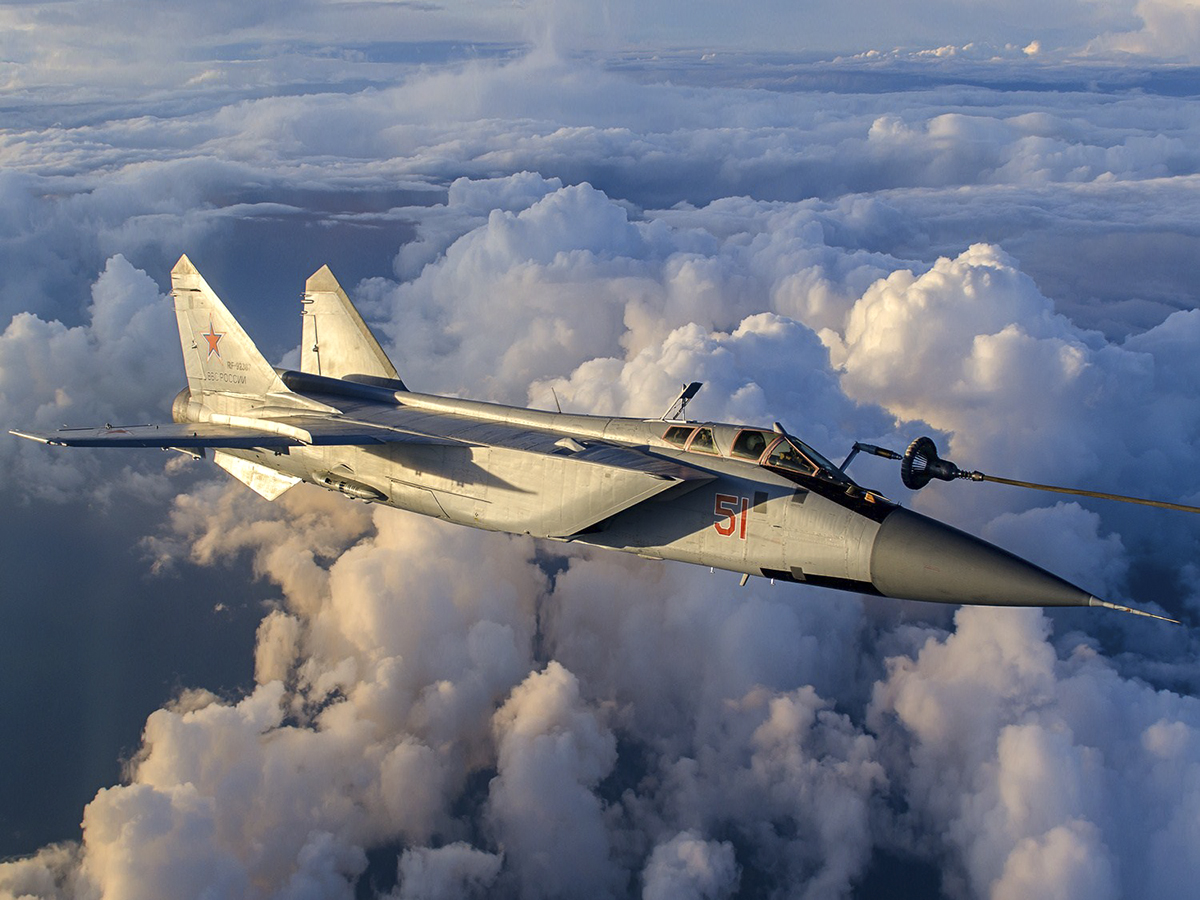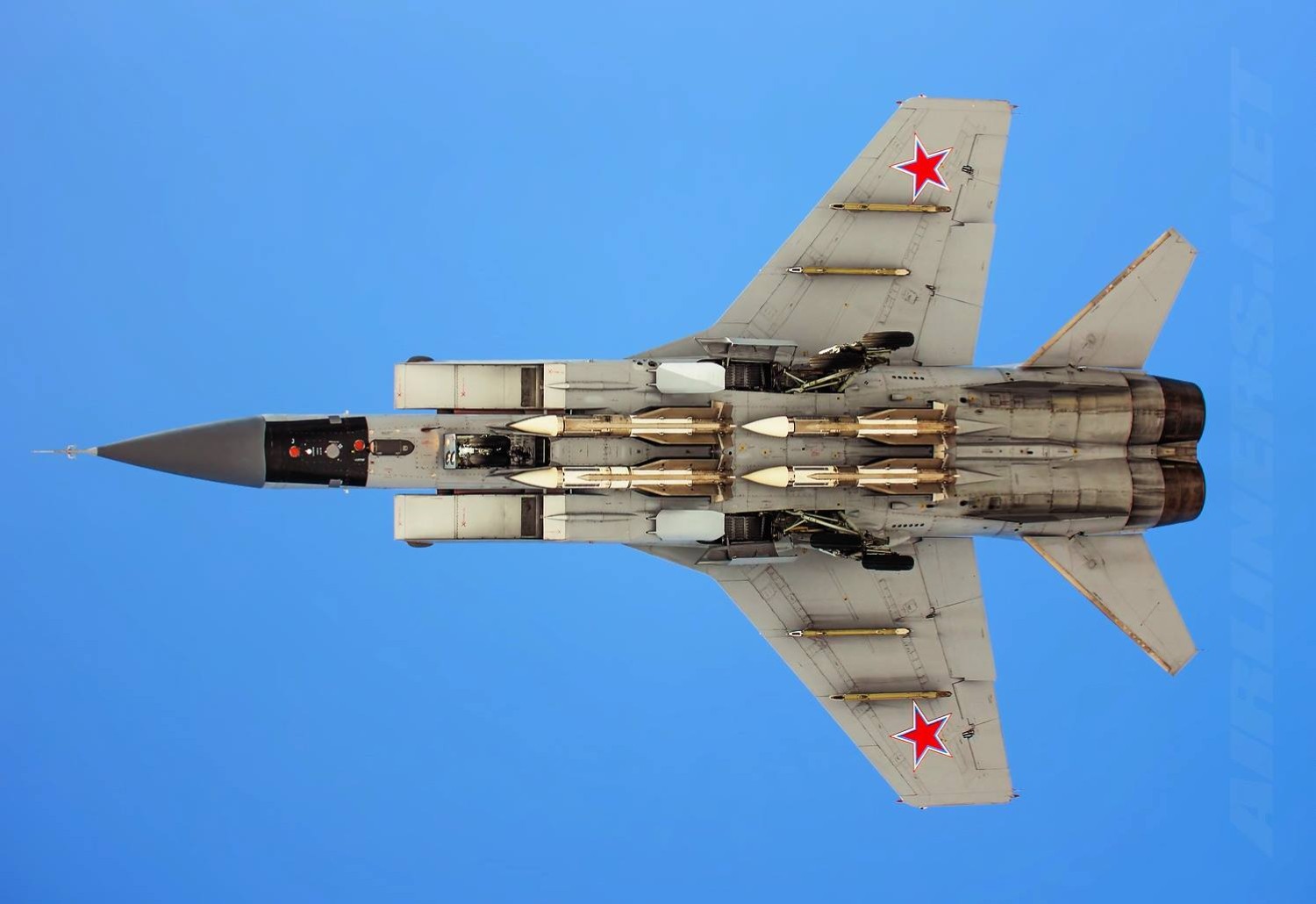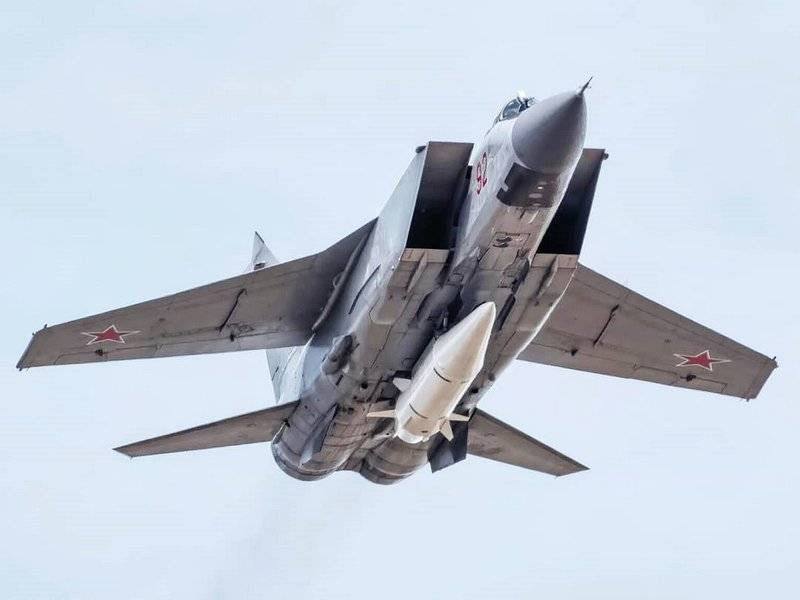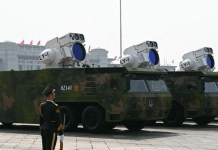A Russian MiG-31 ‘Foxhound’ crashed on April 26 in the Murmansk region after catching fire. According to the Russian state-owned TASS news agency, one of the engines of the MiG-31 caught fire during a scheduled flight and apparently fell into a lake.
The crash of the Russian fighter-interceptor aircraft was filmed by onlookers, and the footage has been doing the rounds on social media, showing the aircraft on fire while falling from the sky.
It remains unclear which unit the MiG-31 belonged to or what variant it was. But TASS reported that the crash took place very near the city of Monchgorsk, based on which experts suggest that it was probably a Russian Naval Aviation (MA VMF) MiG-31BM assigned to the 98th Independent Mixed Aviation Regiment (98th OSAP).
The incident may have filled the hearts of the Ukrainian military officials with joy because the MiG-31 has proven to be the most potent Russian warplane that has been a real nightmare for Ukraine.
As EurAsian Times reported earlier, the MiG-31BM has practically outperformed every other fighter deployed in the ongoing Russia-Ukraine war. This includes other advanced fighters of the Russian Aerospace Forces (VKS), like the Su-30SM and Su-35S, which have also remained very effective and lethal against Ukrainian aircraft throughout the war.
MiG-31BM Interceptor Aircraft
If there is one aircraft whose efficacy has remained undisputed since the onset of conflict in Ukraine, it is the MiG-31BM armed with the long-range R-37M air-to-air missile.
This combination has had a stellar track record in the ongoing war, with no documented loss of a MiG-31BM during combat, whereas the VKS has lost at least two Su-35S and eleven Su-30SMs, of which six were destroyed or damaged in the air.

According to a study on the Russian Air War in Ukraine, published by the London-based Royal United Services Institute (RUSI) in November 2022, the VKS’ defensive patrols have proven highly effective against Ukrainian combat aircraft, with the MiG-31BM and R-37M long-range air-to-air missile being particularly problematic for the Ukrainian fighter pilots.
The RUSI report states that the Su-27, the best interceptor the Ukrainian Air Force has, cannot match the MiG-31’s altitude, speed, or range. The fighter can dash at Mach 2.5 for brief periods and fly at an altitude of around 18 kilometers for a distance of over 700 kilometers.

Also, the R-37M missile can be fired at targets at a distance of 300 kilometers, with the missile performing best at ranges of around 128 kilometers. In contrast, the R-27 missile used by the Ukrainian Su-27s can only be launched from 50 kilometers away.
Experts at RUSI wrote in the report that “the extremely high speed of the weapon (R-37M), coupled with very long effective range and a seeker designed for engaging low-altitude targets, makes it particularly difficult to evade.”
This means that the Foxhounds have a clear edge over Ukrainian fighter jets, allowing them to shoot at any airborne target and escape unharmed.
The MiG-31K & Hypersonic Dagger
The MiG-31BM is not the only Foxhound variant, however, which has had the Ukrainians over a barrel, as the Russians have also been using a variant of the MiG-31 armed with the hypersonic Kh-47 Kinzhal (called ‘Dagger’ in Russian) missiles, called the MiG-31K.
Initially, it was the MiG-31BM that was intended to carry Kinzhal hypersonic missile, but MiG-31K was later selected as the carrier, according to Russian Defense Minister Sergei Shoigu.

The Kh-47 Kinzhal missile is said to have a range of 2,000 kilometers. It can carry either a fragmentation warhead weighing approximately 499 kilograms or a 500-kiloton nuclear warhead, which is 33 times more powerful than the atomic bomb that was used to strike Hiroshima.
The missile follows a flatter trajectory than a standard ballistic missile, leaving the air defenses with a short time to react. Also, the missile is difficult to intercept because of its ability to maneuver at all stages of its flight path.
The Kh-47M2 Kinzhal made headlines last year after Russia announced on March 19 that it had destroyed a weapons storage depot in the village of Deliatyn in the Ivano-Frankivsk region in western Ukraine using its Kinzhal missiles.
US President Joe Biden, speaking about the missile at a conference with business leaders, said, “It’s almost impossible to stop it.”
The MiG-31K has been modified, with all its onboard systems replaced with a new set of hardware to convert it from an air-to-air defense interceptor for the Russian territory into a launch platform for the Kinzhal.
Together, the MiG-31K and the Kinzhal hypersonic missile are said to pose the most indefensible weapon system facing the Ukrainian armed forces.
The MiG-31 ‘Foxhound’: Flying For Over 40 Years
The VKS is said to have a total of 252 MiG-31s in its inventory, of which 10 to 20 aircraft are the upgraded MiG-31Ks. While there are three regiments of the MiG-31BM, comprising around 90 operational units of the fighter type.
The MiG-31 was designed by the Mikoyan design bureau as a supersonic interceptor aircraft, intended to replace the earlier MiG-25 “Foxbat” used by the Soviet Air Forces.

With a maximum speed of 3,000 kilometers per hour, it is considered of the fastest combat jets in the world. The aircraft first took to the skies on September 16, 1975, and was inducted into the service on May 6, 1981, meaning it would complete 42 years of service at the end of this week.
In fact, the Russian Defense Ministry expects the MiG-31s to remain in service until 2030 or beyond. It was announced in 2020 that the aircraft’s service life would be extended from 2,500 to 3,500 hours on the existing airframes.
While Russia is the primary operator of MiG-31s, the Kazakhstan Air Force also operates 20 Foxhounds it inherited from the Soviet Union.
- Contact the author at tanmaykadam700@gmail.com
- Follow EurAsian Times on Google News




